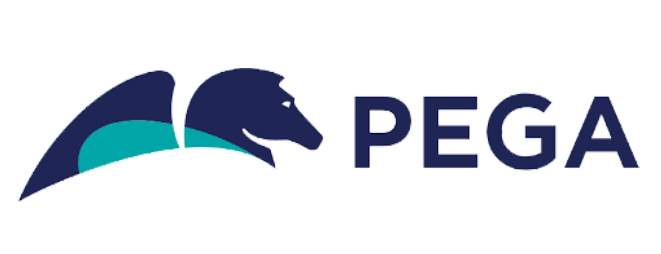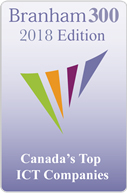
What is PEGA BPM?
Pega’s adaptive, cloud-architected software – built on the unified Pega Platform – empowers people to rapidly deploy, and easily extend applications to meet strategic business needs. Over its 30-year history, Pega has delivered award-winning capabilities in CRM and Digital Process Automation, powered by advanced artificial intelligence and robotic automation, to help the world’s leading brands achieve breakthrough business results.
Pega’s Global 3000 customers rely on Pegasystems dynamic solutions and strategic applications to drive excellence in their sales, marketing, customer service, and operations.Pega BPM is an excellent tool for Business Process Management that is developed on Java and OOP concepts. It has changed the conventional approach towards programming and is sometimes criticized for this reason. With Pega, you do not have to develop a system from scratch, as you already have a flexible, extensible and agile program.
Pegasystems has a long history of developing applications which provide support services to carry out daily corporate operations like sales, marketing, and services. It synchronizes business operations and connects businesses with their customers. Pega BPM is their top product which lets you develop business process flow and decide on which functionality to add. It is sometimes considered to be an expensive solution, due the fact that it is suitable for enterprise-grade users. More often than rare, Pega BPM is applied in the banking, finance, and healthcare sector. It is considered to be one of the best BPM solutions for large enterprises which can afford it and deploy it fully.
Features of PEGA BPM
- Intuitive design tools to capture business objectives.
- Automatic generation of application code—no need for programming.
- Industry-specific solution frameworks such as those for banking BPM to accelerate ROI.
- Enterprise-level scalability.
- Standards-based user interfaces.
- Integration with other business platforms such as CRM software and collections systems.
Why PEGA BPM?
Pega Business Process Management is an all-inclusive suite for BPM development without using coding approach. It is seen as a powerful product due to the numerous benefits it offers to medium and large-scale organizations.You can benefit from Pega if your system has mature integration capability, but lacks a full-scale BPM. It gives quick results with the least hassle possible. Its business-friendly toolkit defines applications and helps any business user to develop a business application without any hard-coding, the most difficult aspect of a development procedure. Pega offers the least amount of technical syntax to handle during the modeling process and so, simplifies the process.
Pega BPM supports case lifecycle management which allows a business owner to develop a process flow using all the processes that need to be carried out in a specific process flow. These tasks may vary greatly like a single process flow usually has numerous different tasks like document handling, decision making, approval etc.
You have to design your system only once, and you can deploy its user interface anywhere anytime. Pega replicates a user interface which was prepared for the desktop to make it suitable for other channels like tablets and mobile phones. All in all, Pega allows quick development without the need of coding and adopts changes. It has truly revolutionized the way business process management was seen in the past.
How can Tangentia and PEGA BPM help you?
Tangentia and Pega to help organizations leverage the power of business process management to transform business process across the enterprise.
Tangentia offers the following services using PEGA BPM:
- BPM Strategy & Implementation: BPM roadmap definition, BPM CoE setup, business process automation and more
- BPM Consulting: Helping you augment your team with global on-demand expertise – experienced consultants available across major BPM platforms.
- Software Resale: Authorized reseller of IBM Process transformation manager
- Training and Academy: We will train you to leverage BPM for your industry sector and enterprise, and train your staff with Tangentia BPM academy services
What is Business Process Management (BPM)?
Business process management (BPM) is a methodology to manage processes and workflows in an organization. The goal of BPM is to increase efficiency, performance, and agility in the day-to-day operations of a business. BPM has been widely adopted by organizations and is essential for any enterprise businesses that want to be competitive in today’s marketplace. For example, the world’s leading airlines utilize BPM to manage flight schedules and terminal operations.
BPM Methodology
BPM methodology can generally be implemented in the following steps:
- Analysis: Comprehensive analysis is done to discover and identify processes that can be created or optimized to meet business requirements or improve performance. Specifications for a design solution can be derived from this analysis.
- Design: The design of a process involves workflows that include human-to-human, system-to-system, or human-to-system interactions. The design should aim to reduce errors and maintain relevant standard operating procedures or service level agreements.
- Modeling: Once the process design is ready, it can be modeled using varying input values to observe its behavior. If undesirable behavior is observed, design changes can be made iteratively. Software tools are available to effectively model and evaluate processes.
- Execution: A process model can be executed using a business rules engine to govern process execution.
- Monitoring: During execution, processes can be monitored to collect reporting data for performance, errors, and compliance. Monitoring allows businesses to evaluate executed BPM solutions against corresponding design models and against relevant KPIs. Data collected by real-time or ad-hoc monitoring can also be used by predictive analytics software to anticipate future problems.
- Optimization: Data from the modeling and monitoring phases can be used to identify areas of the solution that can be improved to derive higher efficiency and better value.
Benefits of BPM
- Cost efficiency
- Business agility
- Compliance ease and visibility
- Customer focus
- Compliance, Safety & Security
Industries for your Business Process Management

Business Process Automation Best Practices

- Choose the right Process
- Choose the right tool
- Define specific automation goals to measure the ROI
- Ensure clear establishment of role and hierarchy
- Involve everyone in the process
- Train the users
- Focus on continuous improvement
- Always have a backup plan
Our Steps to successful BPM implementation
- Pick the right first project. Don’t pick something too complex or ambitious. This could be both technically and politically problematic. Get quick wins by implementing a portion of the process or select a project with less impact but one you can complete within 90 days or less.
- Write or discuss all use cases. Even simple processes end up having many variations. Discuss and document all the various use cases. As much as people loathe documenting, it will help you uncover requirements early on instead of once users start testing (and grumbling). An ounce of prevention here is worth pounds of cure.
- Determine measurements/metrics needed up-front. Who is the customer and what are the requirements critical to success. (Considering using a SIPOC Map). Don’t forget about metrics you will need to measure success. Knowing up front what the metrics are that will be needed to track, monitor and measure the process can affect your data modeling and data capture plans.
- Prototype. Mock-up forms, worklists, etc. To “Walk” Forms/User Interface screens through the process without all the logic first. It will help the users visualize the process and ‘experience it” and uncover more requirements.
- Iterate, Iterate, Iterate
- Plan for iterations and meet weekly for continuous feedback and course corrections.
- Plan for iterations and meet weekly for continuous feedback and course corrections..
- Plan for iterations and meet weekly for continuous feedback and course corrections.
- Repeat the above…
- Exit only when you’re sure you have something users will be happy with.
- Test the Forms, Integrations and Flow separately first. Isolating each component and making sure it works first can be helpful in speeding implementation. Use sample data (variables or similar) to test the behavior of the form and process through the various use cases. Test each one independently (does the form hide or show sections as it should? does the process execute properly end to end?) before linking them all together. It makes troubleshooting easier. And if multiple people are on the project, it’s by far the best way to break down development tasks.
- Invest in training and support. Don’t short change the knowledge part of your investment. Training and support from the vendor you choose will be money well spent.
- Usability, look and feel matter. Often the focus is on process logic and integration. Even a great, technically sound process that meets all of your objectives can be rejected by users when the user experience is the last consideration. Users focus on look and feel and usability (as they should). Brand your BPMS tool (Login, header, etc. – most tools support this as a feature of the tool). Include breadcrumb trail types of markers so a user knows where they are in the process. Consider breaking forms into multiple screens instead of tab style layouts so users know how to progress through screens. Follow style guides. Focusing on design and usability can make the difference between users loving an application for all the help it provides, or … feeling hatred for it and all the people that dared to foist it upon them.
- Include all stakeholders in the process. Include representatives from every group impacted in kick-off meetings, prototype reviews, etc or at a minimum, at least get their feedback at critical points in the process (once to-be requirements are complete). If the process is very large and complex, consider breaking into subsections to keep groups more manageable.
- Consider future change. Don’t just design for today. Consider what types of changes have occurred in the past and what might be likely in the future. What device changes might there be (moves to MACs or Mobile devices)? Do policies frequently change? (perhaps rules should be exposed in a screen for users to easily change).
Who is Tangentia?
Tangentia: Global Boutique Technology Solutions
Proudly Canadian with Toronto HQ with offices in Wall Street, NY & Goa, India
| EXPERIENCE | SUCCESS | CREDIBILITY | SOLUTIONS | PARTNERS |
| 15+ years executing projects across Canada, USA, India and other countries | 1000+ customers & proven success stories | 11 Fortune 500 customers, over 10 Billion USD in SaaS transactions | IP based Products, SaaS Platforms and Managed Service Solutions | Partnering is a core value and fundamental part of our corporate strategy |
Our Global Practices
We have global practice running across the globe situated in Toronto, New York and Goa.

- 25+ specialists
- Vertical Focus
- Bot Building
- Roadmap definition
- Off-site & On-Site Training
- Best Practice Webinars
- Competitions
- Collaborations
- Center of Excellence (COE)
Awards & Recognition

Most profitable 500 companies in Canada 6th time in a row.

The fastest-growing companies in America 2018.


